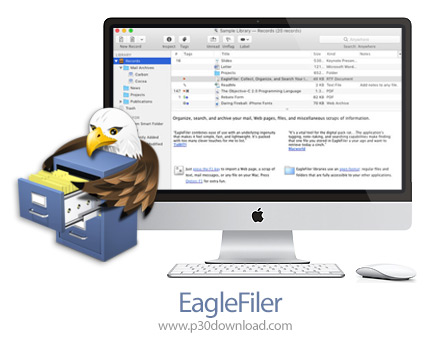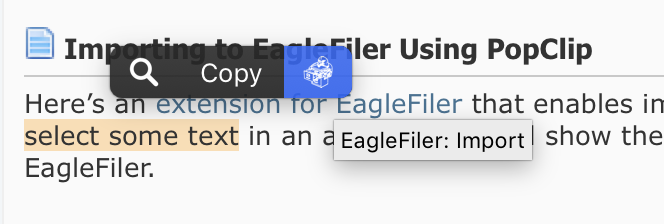

Even a tiny text file occupies a minimum logical space on your hard disk – typically 8 KB. In the distant past, one might have criticized this scheme for wasting space. If the world were suddenly struck by mysterious cosmic rays that destroyed EagleFiler, none of your data would be lost, because your data are just normal files in folders. You can open them directly in the Finder. You can search your snippets within EagleFiler, but you can also search them with system-level Spotlight.

But all the same, there are your snippets just sitting there, ordinary files in an ordinary folder, completely visible andĪccessible in the Finder. So you do have to make a conscious decision to keep particular snippets in a particular folder – the snippets can’t be scattered all over your hard disk – and you do need, in general, to refrain from altering the contents of that folder directly, interacting with them through EagleFiler instead.

A library also contains some housekeeping files maintained by EagleFiler. That’s why I was intrigued by the lighter touch of EagleFiler, from C-Command (the development house of Michael Tsai, who also writes SpamSieve (see “ Tools We Use: SpamSieve,” 17įebruary 2003) and other utilities I wouldn’t want to be without).ĮagleFiler’s chief document type is called a “library.” You can have as many libraries as you like, and each library is just an ordinary folder in the Finder, containing files that are your data each snippet is simply a file in a standard data format.
#EAGLEFILER AND IMAP SERIES#
In nearly two decades of experimenting with ways of storing and retrieving text and other snippets of information, largely documented in the “ Conquer Your Text” series of articles, I’ve found that most applications take a fairly heavyweight approach, requiring me to hand my data completely over to their care, keeping it in a specific place or (even more often) in a document and format specific to the application.


 0 kommentar(er)
0 kommentar(er)
